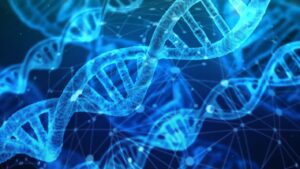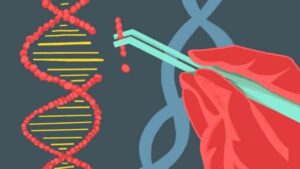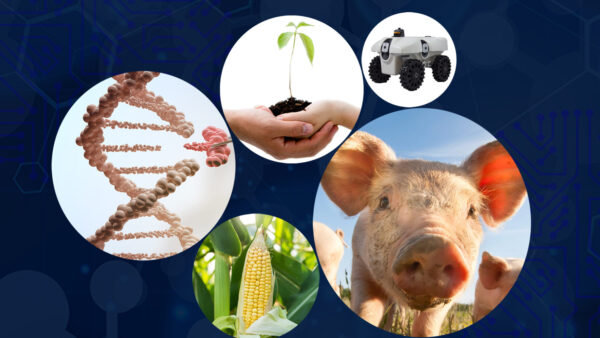“Wow!” “Look at my DNA!” the exuberant little boy blurted out as he pulled the thread-like strands out of the test tube.
Soon other excited voices chimed in as about two dozen children and a sprinkling of adults began to play with their own genetic material. We were all seated around tables in a laboratory at the American Museum of Natural History in New York, having been attracted by signs pointing towards the “Gene Scene.”

Our experiment started with everyone swirling salt water in their mouth for thirty seconds or so to collect some of the cells that are continuously sloughed off by our cheeks. We were then asked to spit the solution into a little cup (as cries of “yuck” filled the room) and then transfer it to a test tube containing some detergent.
A couple of minutes of gentle shaking allowed the detergent to break down the cell membranes and liberate the DNA molecules which were then solidified by the addition of alcohol. We then dipped a stirring rod into the test tube and pulled out long filaments of DNA. As the session drew to a close, the children were asked what they had learned.
There were some pretty good answers but the one that really stuck in my mind was provided by the little boy who had cried out so enthusiastically when he first glimpsed his DNA. What he had learned, he said, was that when he grew up, he wanted to study biotechnology and become a genetic engineer! Quite a refreshing comment given that so many people these days look warily on this area of science. The raised eyebrows can often be traced to a lack of clear understanding of what biotechnology is all about.
Simply put, biotechnology is the provision of useful products and services from biological processes. It does not necessarily involve scientists in white lab coats hovering over Petri dishes. In fact, biotechnology goes back thousands of years, probably to the first use of yeast to convert sugars and starches to alcohol.
Yeast is a little living machine that takes in food and produces excrement. But don’t poopoo that excrement. Many humans like it. It’s called alcohol. Molds are also neat little machines that produce a variety of by-products. When the ancient Egyptians put moldy bread as a poultice on wounds, they were using biotechnology. The mold probably churned out penicillin, not recognized as such of course, and helped the wound heal.
How these microbes convert raw materials into finished products was not elucidated until relatively recent times. The pivotal moment came in 1953 when Francis Crick and James Watson unraveled the molecular structure of DNA, the molecule that controls the inner workings of the living cell. The instructions for everything a cell does are encoded in genes which are specific fragments of DNA.
Basically, genes tell the cell what proteins to produce. Proteins are needed as structural material and as enzymes, the catalysts that control all reactions in a cell. Once DNA’s role was clearly understood, it became obvious that if its structure could be modified, the proteins it produced could be altered. By the 1970s such manipulation, known as genetic engineering, had become a possibility. Genes could be transferred from one organism to another or could even be built from fundamental components using the “Gene Machine,” invented by former McGill Chemistry professor Kelvin Ogilvie, now President of Acadia University.
We are now beginning to see some of the practical results of this genetic tinkering. For example, cheese making requires an enzyme called chymosin to separate the curds from the whey. The traditional source is the stomach lining of calves, but the fragment of DNA, the gene, which tells the cell to produce this enzyme, has now been isolated. It can be incorporated into the DNA of a yeast which then dutifully cranks out chymosin.
This has made cheese production more efficient and has also allowed for the manufacture of cheese which has no meat components, something that is desirable when conforming to certain religious dietary restrictions such as kashrut. Much more dramatic is the potential treatment of people who suffer from specific immune system deficiencies due to a malfunctioning gene. Already in one case, bone marrow has been extracted, the malfunctioning gene replaced, and the marrow infused back into the bone. This has resulted in the production of cells with normal genes.
These days insulin for diabetics is cranked out by bacteria to which the human insulin gene has been transferred. Bacteria also have been engineered to produce TPA (tissue plasminogen activator) which has saved countless lives when administered after a heart attack to dissolve blood clots. Before the genetic engineering, TPA was produced by fermentation and was very expensive.
By the time the little guy who had been “wowed” by the experiment at the museum, grows up, genetic engineering will have produced wonders. As he wandered off, I noted that he stuffed his DNA sample into the back pocket of his jeans. Jeans that may have been dyed with indigo produced by recombinant DNA and made of cotton genetically engineered to repel insects without the need for pesticides.
Editor’s Note: This piece originally appeared on our sister publication’s page, European Seed.












